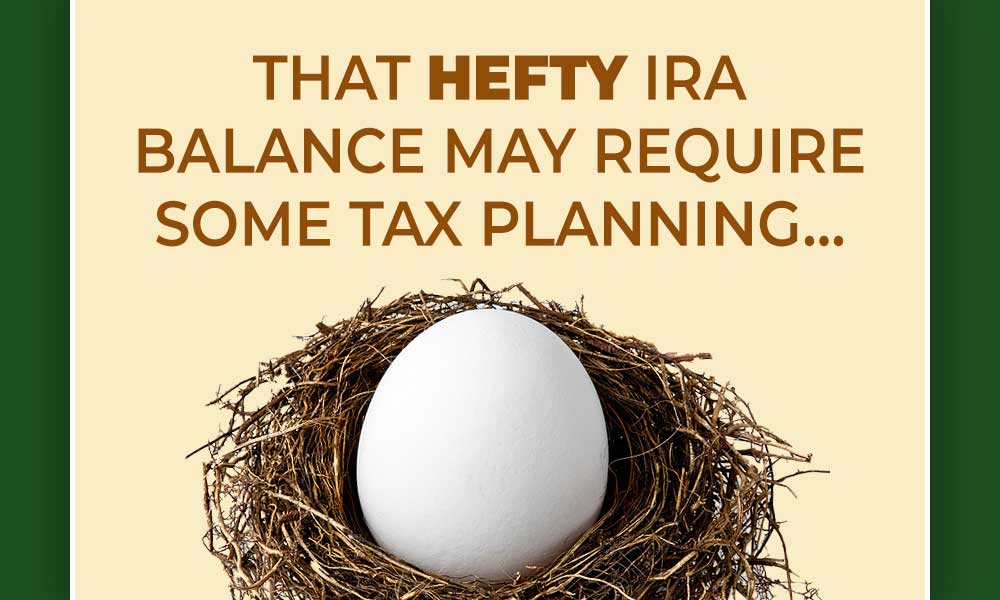When it comes to your retirement nest egg, we have some good news and some bad news. Which would you like to hear first?
Good News? The market’s performance last year created record-breaking year-end balances in many individual retirement accounts, or IRAs. As of quarter three of 2023, the amount held in IRAs nationally is $12.6 trillion, according to the Investment Company Institute.¹
Bad News? Due to the increased account values, you could face larger Required Minimum Distributions (RMDs) even if your balance declines later. This means higher taxes. And, if you inherit an IRA, you will also be subject to higher RMDs.
Let’s turn those lemons into lemonade! If you find yourself in this position, here are five tax strategies to consider.
- Convert to a Roth. While larger RMDs mean higher taxes, they can also be an opportunity. Converting a portion of your IRA to a Roth IRA now allows withdrawals in the future to be tax-free, potentially saving money compared to higher future rates. Additionally, Roth conversions can help reduce your overall taxable IRA balance and future tax bills for you and your beneficiaries.
- Take Distributions Now. Taking distributions now can also satisfy RMDs for your overall IRA portfolio. Use excess income to either fund long-term care insurance or pay the premiums on life insurance, creating a tax-free windfall for your beneficiaries.
- Reduce Estate Taxes. Larger IRA balances can create larger estates. Paying taxes on Roth conversions can reduce your taxable estate value. This can be beneficial considering potential state estate taxes.
- Think Charitably. Qualified Charitable Distributions, or QCDs, offer a tax-efficient way to support your favorite charities. Direct transfers from IRAs to QCDs allow you to reduce your taxable IRA balances without incurring additional taxes. This can be advantageous during the pre-RMD window between ages 70½ and 73.
- Optimize Your QCD. To maximize the benefits of QCDs, consider implementing them early in the year, especially for individuals subject to RMDs. Doing so enables the QCD to fulfill the RMD requirement (up to the annual limit) and minimize taxable income.
These record-breaking IRA balances present both challenges and opportunities. By implementing strategic tax planning measures, we can work together to navigate these changes and potentially save tax dollars in the future.
If you’d like to learn more, feel free to reply to this email so we can set up some time for a one-on-one discussion.
![]()
Did you know?
The amount held in IRAs nationally is such a large number… $12.6 trillion¹. Let’s put that into context.
The combined value of the five largest publicly traded companies globally is about $11.5 trillion, according to Investopedia².
Traditional IRA account owners have considerations to make before performing a Roth IRA conversion. These primarily include income tax consequences on the converted amount in the year of conversion, withdrawal limitations from a Roth IRA, and income limitations for future contributions to a Roth IRA. In addition, if you are required to take a required minimum distribution (RMD) in the year you convert, you must do so before converting to a Roth IRA.
This information is not intended to be a substitute for specific individualized tax advice. We suggest that you discuss your specific tax issues with a qualified tax advisor.

